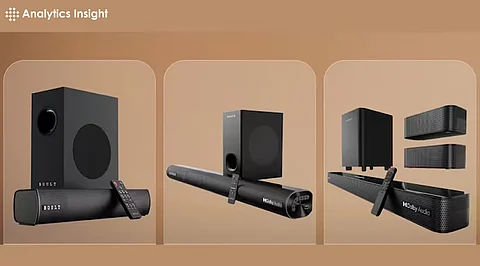

Audio tech continues to advance, and two names are causing a stir: Boult's new BoomX and the established Dolby Atmos. Both claim to revolutionize the way we listen to music, movies, and games, but they do so in different ways.
Let's dissect what BoomX has to offer, how it compares to Dolby Atmos, and whether it's a rival or an addition.
Boult, a company renowned for budget audio equipment, just introduced BoomX technology. It's meant to provide deep bass and a spacious soundstage to make each beat thump and each note stand out. While some other overhyped marketing terms, this one appears to rely on more advanced driver tuning and digital signal processing to make it a player. Imagine it as a turbocharger for speakers or earbuds, particularly for bass enthusiasts who want that stomach-pounding thump in their music.
Although Boult hasn't let out all the technical secrets, the preliminary word is that BoomX focuses on intensity rather than complexity. It's not about complicated algorithms so much as sheer, room-trembling sound—ideal for casual listeners who desire impact without complications.
Dolby Atmos, then, is a heavy audioweight. Introduced more than a decade ago, it's not merely about how loud it plays—it's about immersing you. Atmos builds a 3D-sound bubble, having sounds above, below, and beside you. Imagine a helicopter roaring above during a film or raindrops pounding from all directions. It's designed for accuracy, employing object-based sound to place sounds in space rather than blasting them at you.
Atmos excels in configurations with more than one speaker or with expensive headphones that can handle its spatial illusions. It's a standard in movie theaters, streaming services such as Netflix, and even in gaming systems. However, it requires compatible hardware and material, which makes it somewhat less accessible for everyday use.
This is where the rubber hits the road: BoomX and Atmos appeal to different ears. BoomX turns up the bass and opens up the sound, delivering a brash, in-your-face experience. It's like turning up the volume on a live concert—perfect for hip-hop, EDM, or action movies where you want to feel the impact. But it may not nuance subtle details, such as the pluck of a guitar string or a whisper in a quiet moment.
Dolby Atmos plays a different game. It’s less about raw power and more about layering soundscapes. You’ll hear a violinist in one corner and a drumbeat in another, all woven into a seamless tapestry. It’s ideal for cinematic thrills or intricate music tracks, though it can feel overkill for basic playlists. BoomX keeps it simple and loud; Atmos goes deep and wide.
Cost is a great barrier. BoomX is integrated into Boult's affordable products—earbuds for less than $50, no additional hardware required. It's plug-and-play; no special app or subscription is needed. That's a plus for anyone who just wants improved sound without spending a fortune or messing with settings.
Dolby Atmos, while amazing, isn't free. You require Atmos-capable hardware—think top-of-the-line headphones, soundbars, or a complete home theater system—along with content mastered for Atmos. Streaming services tend to require an additional fee for Atmos tracks, and not all songs or films are Atmos-compatible. It's a high-end experience for a high-end price.
So, BoomX or Atmos? It's not a clean knockout. BoomX is the plucky underdog, providing a big sound for small wallets. It's ideal for casual listeners who want bass and don't require a tech degree to appreciate it. Dolby Atmos is the refined champ, providing a sophisticated, surround-sound experience for those who are willing to invest in the ecosystem.
If you’re blasting Spotify on a commute, BoomX might be your vibe. If you’re sinking into a sci-fi blockbuster at home, Atmos takes the crown. Boult’s tech isn’t here to dethrone Dolby—it’s here to shake up the budget scene. Both can coexist, serving different crowds with different cravings.
